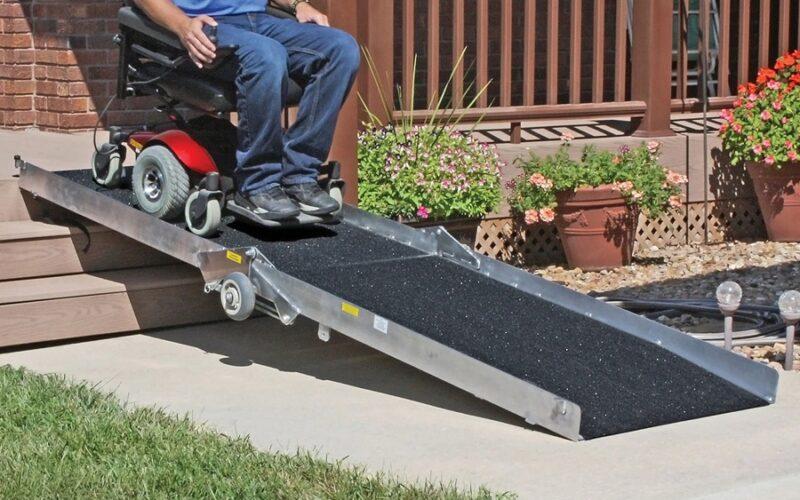
Everyone requires mobility regardless of age, ability, or disability. Many people in Melbourne struggle with mobility because of their age, injuries, or disabilities. It is difficult to move around and perform routine tasks. As a result, wheelchair ramps are now a required element in all public and commercial buildings in Melbourne. The goal of this article is to give readers a thorough understanding of wheelchair ramps in Melbourne, their significance, their different varieties, and best practices for building and constructing ramps.
Importance of Wheelchair Ramps in Melbourne
The population of disabled people in Melbourne is increasing due to many reasons such as an aging population, road accidents, or genetic disorders. Therefore, providing accessibility for everyone, including disabled people, is a human right and a social responsibility. Wheelchair ramps Melbourne provide many benefits for everyone regardless of their physical abilities. The following are some reasons why wheelchair ramps are important:
1. Increased mobility and independence
Wheelchair ramps enable disabled people to freely move around and access buildings, streets, parks, or public transport. They can go to work, school, shopping or socialize without help from others. Wheelchair ramps allow disabled people to enjoy their rights and freedoms independently and with dignity.
2. Safety and convenience
Wheelchair ramps offer wheelchair users a secure and practical means to get over steps, uneven ground, or other barriers. Without ramps, it may be necessary for wheelchair users to rely on others to help them ascend stairs, which raises the possibility of mishaps, injuries, or delays. Disabled persons can save time, energy, and unnecessary risks by using wheelchair ramps.
3. Legal and ethical obligation
In Australia, it is required by law and morality to make everything accessible to everyone, including individuals with disabilities. All new and existing buildings must provide appropriate access for people with disabilities, according to the Disability Discrimination Act of 1992 and the Australian Building Code. Therefore, by providing wheelchair ramps, building owners, and managers comply with the law, and promote social justice and equality.
Types of Wheelchair Ramps in Melbourne
These chairs come in a range of styles, sizes, and materials in Melbourne. The kind of ramp chosen depends on the demands of each user, the layout of the structure, the area, and the available funds. The following are the most prevalent types of wheelchair ramps in Melbourne:
1. Modular ramps
Prefabricated ramps constructed of steel or aluminum are known as modular ramps. They are simple to install, relocate, and modify for various requirements and locations. Handrails, platforms, and landings are all options for modular ramps, which can also be straight, inclined, or curved. They can be tailored to match particular needs and are ideal for both temporary and long-term use.
2. Portable ramps
Portable ramps are lightweight ramps made of aluminum or carbon fibre. They can be folded, carried or stored in a bag, and can be used indoors or outdoors. Portable ramps are suitable for use in areas where permanent ramps are not feasible or available, such as public parks, beaches, or events.
3. Threshold ramps
Threshold ramps are short ramps designed to overcome small obstacles such as door thresholds, kerbs, or steps. They are usually made of rubber, plastic or aluminum, and can be fixed or portable. Threshold ramps are suitable for home use or in public buildings where space is limited.
4. Wooden ramps
Wooden ramps are ramps made of wood, and they can be built on-site or prefabricated. These are an affordable option, and they can blend in with the surroundings. Wooden ramps need regular maintenance and can be slippery when wet.
5. Concrete ramps
Concrete ramps are permanent ramps made of concrete or reinforced concrete. They are durable, resistant to weathering and erosion, and can support heavy loads. Concrete ramps can be customized to meet specific needs, and they require minimum maintenance. They are suitable for public buildings and outdoor areas where high traffic is expected.
Guidelines for Designing and Installing Wheelchair Ramps in Melbourne
Designing and installing wheelchair ramps in Melbourne requires careful planning, attention to detail, and adherence to standards and guidelines. These guidelines can help you design and install wheelchair ramps in Melbourne:
1. Regulations and standards
The Disability Discrimination Act must be complied with while building wheelchair ramps in Melbourne. Minimum requirements for accessibility are set forth in these laws and guidelines, including slope, width, railing height, landing size, and non-slip surface.
2. Slope
The slope of the ramp depends on the height of the surface it is connecting to and the distance it covers. The maximum slope for a wheelchair ramp in Melbourne is 1:14, which means that for every inch of vertical rise, the ramp must be 14 inches long. A steeper slope can make it difficult or dangerous for wheelchair users to ascend or descend the ramp.
3. Width
The width of the ramp must be at least 36 inches or 900mm to accommodate a wheelchair user and a helper or guide. A wider ramp can provide more space and comfort for wheelchair users.
4. Handrails and guardrails
Handrails and guardrails are essential features of wheelchair ramps in Melbourne. They provide support, guidance, and safety for wheelchair users, especially on ramps with steep slopes or sharp turns. The height of the handrail must be between 33-38 inches or 850-965mm from the ramp surface, and the guardrail must be at least 42 inches or 1070mm high.
5. Landing size
The landing is the flat surface at the top and bottom of the ramp, which provides a resting place and a smooth transition between the ramp and the surface it connects to. The landing size must be at least 5 feet or 1520mm long and as wide as the ramp. A larger landing can provide more space for maneuvering and turning.
Conclusion
Wheelchair ramps in Melbourne are essential features of buildings, roads, and public spaces that enable disabled people to access them independently, safely, and with dignity. There are various types of wheelchair ramps in Melbourne that can meet different needs and budgets. Designing and installing wheelchair ramps in Melbourne requires adherence to standards and guidelines that ensure accessibility, safety, and convenience. Wheelchair ramps in Melbourne are not only beneficial to disabled people but also promote social justice, equality, and human rights.





